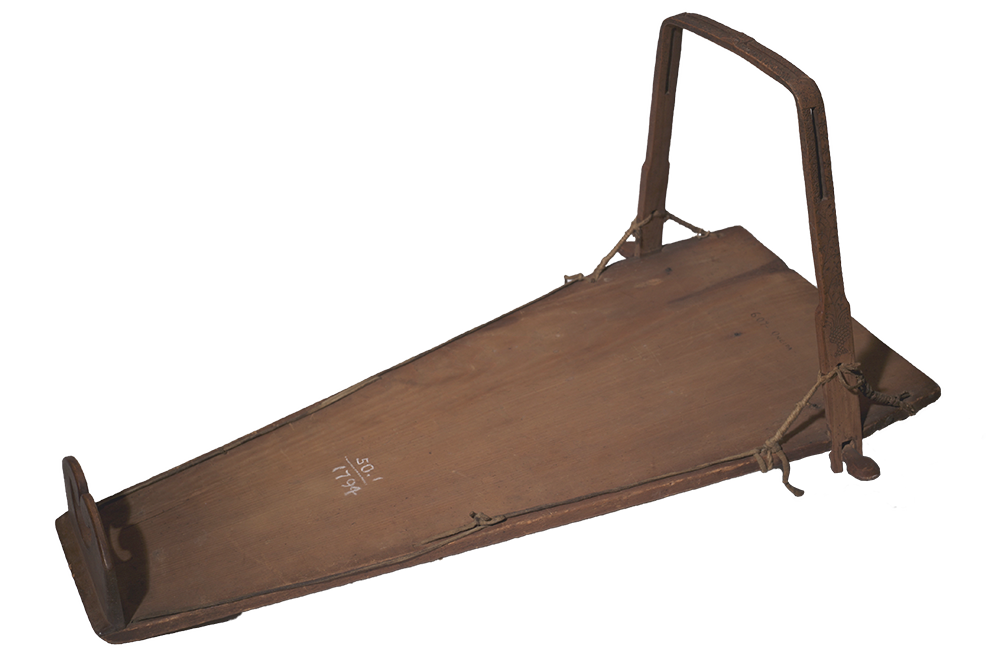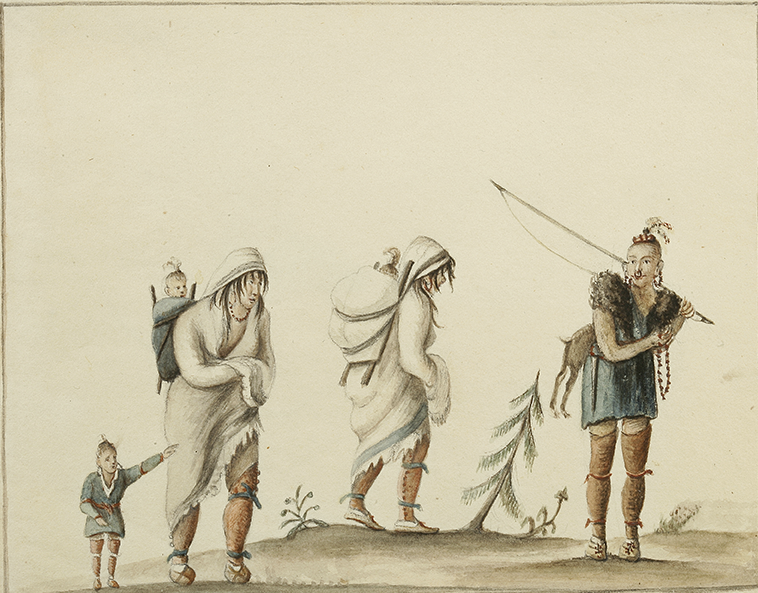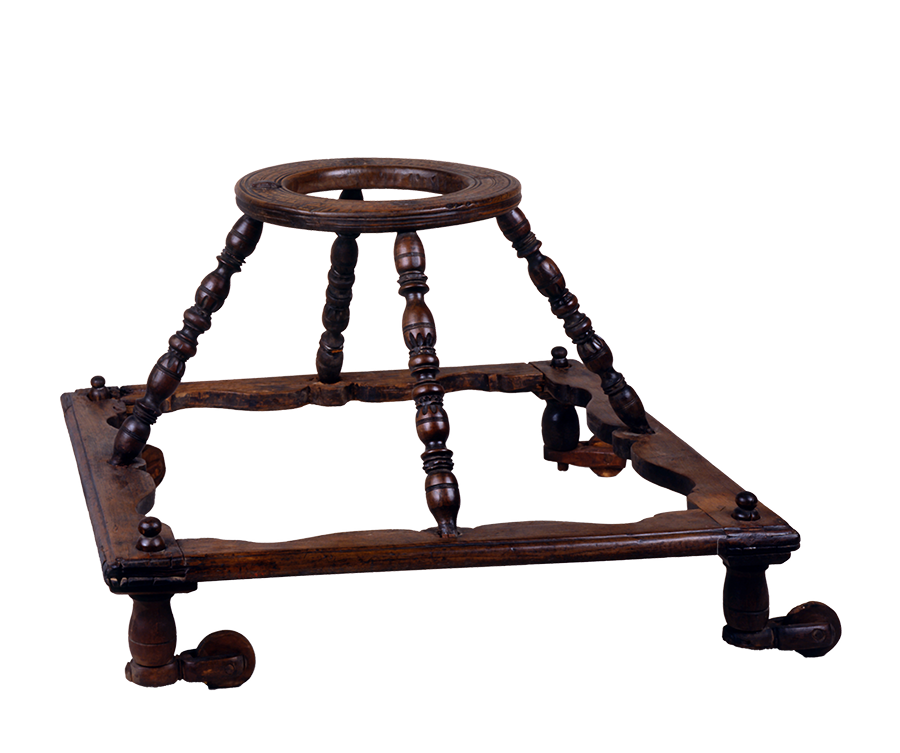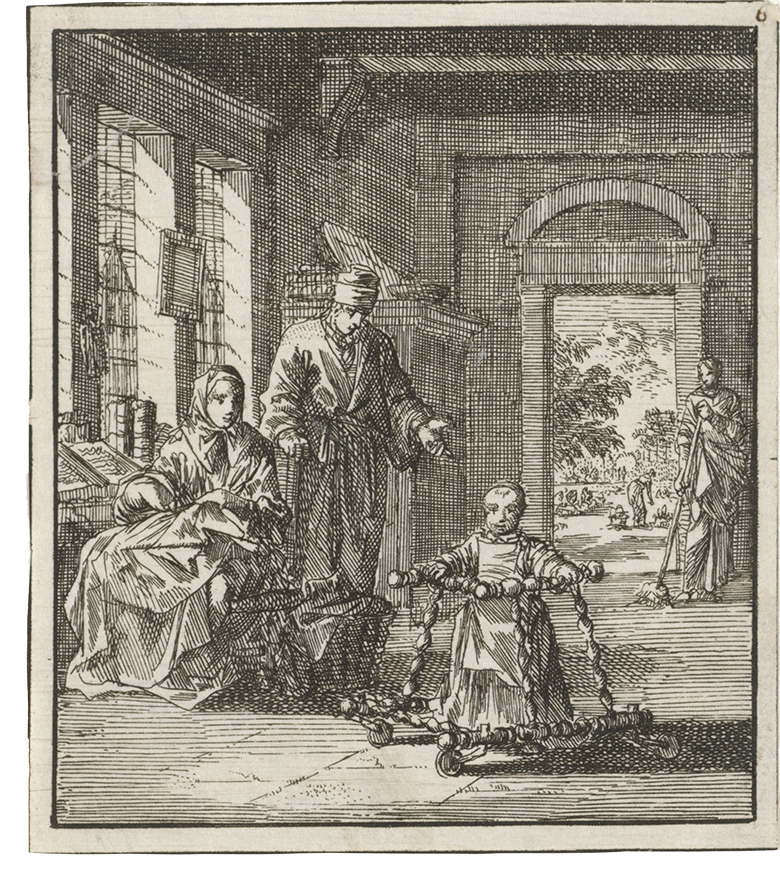Background
Life in North America in the early 1600s was very challenging. Every man, woman, and child had to work to produce food, build shelters, and create the household items needed for survival. Women in these communities had the added responsibility of caring for babies and small children. They invented ways to take care of their young while getting the rest of their work done.
About the Artifacts
These objects demonstrate how Oneida and Dutch women solved the problem of caring for babies while working. Oneida mothers tightly swaddled their babies and strapped them to cradleboards like the one pictured. If a mother was working in one spot, the cradleboard was propped against a wall, tree, or stone so the baby could watch and hear everything that was happening. If a mother was traveling or working in the fields, the cradleboard could be carried on her back. Cradleboards kept babies safe and secure, and left a mother’s hands free for other work.
Dutch mothers used loopwagens to keep their babies safe. Like modern-day baby walkers, loopwagens let babies learn how to walk without monopolizing their mothers’ time. Dutch mothers could prop their babies in the small upper circle and let them push themselves around the house. The large base of the loopwagen prevented babies from getting within arm’s reach of dangerous objects, like open fires. But accidents were always a possibility, so a careful mother always kept an eye on her child as they moved around the house. In large families, older children, especially girls, were responsible for watching over their younger siblings, giving mothers even more freedom. In wealthy homes, enslaved women and girls were given this responsibility.
Vocabulary
- cradleboard: A piece of wood that Indigenous women strapped their babies to for safety and transport.
- loopwagen: A baby walker.
- Oneida: An Indigenous community that originally inhabited the area now known as upstate New York. One of the five founding nations of the Haudenosaunee. Today there are Oneida communities in New York, Wisconsin, and Ontario, Canada.
- swaddle: To wrap a baby in garments or cloth.
Discussion Questions
- Why did Oneida and colonist women need tools to keep their babies safe and close?
- What does the existence of these objects tell us about the lives of women in North America in the 1600s?
- What do these objects teach us about the lives of babies and young children in the 1600s?
Suggested Activities
- APUSH Connection: 2.7 Colonial Society and Culture
- Include these artifacts in any lesson about daily life in the colonies. These artifacts highlight how women balanced their many competing responsibilities.
- Ask students to compare and contrast the function of the loopwagen and cradleboard, and to determine what each reveals about the lives of women and children, and how their lives differed depending on the community they lived in. For example, the cradleboard was designed to be easily carried on long journeys, while the loopwagen could only work in a home or yard. What does this reveal about each community?
- Invite students to write about what life would be like from the perspective of a child in either of these objects. What can they do? What limitations do they have? What are they learning about their place in the world around them?
- Combine the image of the cradleboard with Indigenous Agricultural Innovation and Women’s Labor Agreements for a lesson on the labor of women in Indigenous communities.
- Not every child born in the New World benefited from a mother’s constant presence and attention. Invite students to read any of the following to learn about what happened to children who did not have the luxury of familial security:
- For a larger lesson on the experiences of Dutch women in the colonies, teach this resource alongside any of the following:
Themes
DOMESTICITY AND FAMILY; WORK, LABOR, AND ECONOMY










